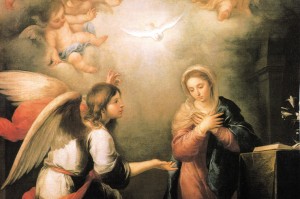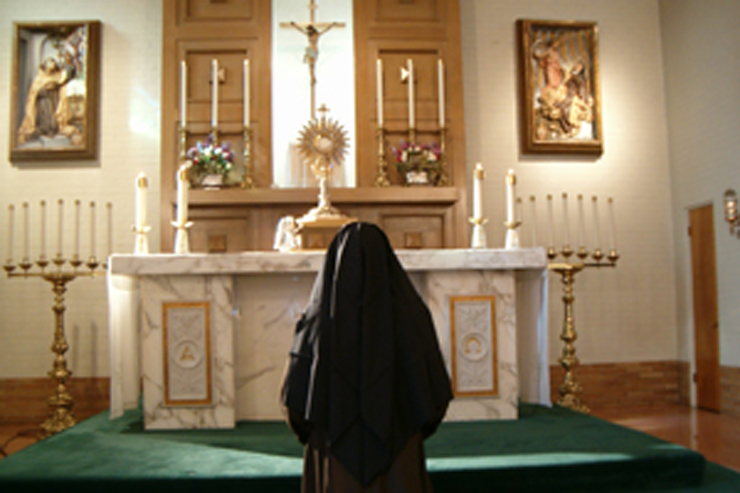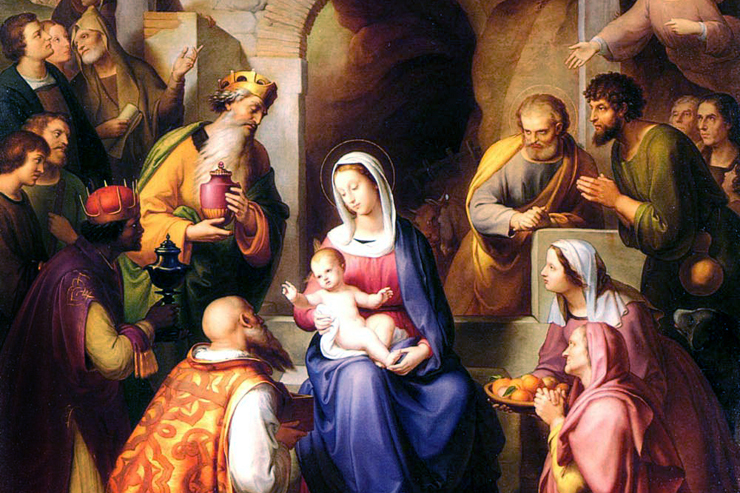My guardian angel has prayed more rosaries than I have. There’s a pious saying that if you fall asleep while praying your prayers, your guardian angel finishes them. Well, for many years, I knew I should be saying a daily rosary, but I thought if I started the Creed as my head hit the pillow at night, I could at least say I tried. Let’s just say that my guardian angel had its work cut out for it. Every night.
There’s nothing wrong with saying the rosary as you go to bed. In fact, in his interview with Cardinal Ratzinger, God and the World, Peter Seewald asked the future Pope what he did at night when he couldn’t settle down, and Ratzinger said, “I would recommend the Rosary. That is a form of prayer that, besides its spiritual meaning, has the power to calm the inner self. If we hold fast here to the actual words, then we are gradually freed from the thoughts that so torment us.”
But maybe by only praying the rosary then, I was missing out on some of the fruits. Why was I pushing it until the end of the day? I can’t use the excuse that I didn’t have time. The rosary generally takes about fifteen minutes, depending on what God wants to do in your time of meditation. fifteen minutes is about one percent of your day. Americans spend an average of one hundred sixty-two minutes on their mobile devices every day. And that doesn’t include actually talking on them! And the rosary only takes about fifteen minutes. Can we really say we don’t have time for the rosary?
As we looked at last week, it can be difficult to say the rosary. Perhaps our minds wander and we are easily distracted. Maybe we struggle with whether to pay attention to the mysteries of the Rosary or the words our lips are praying. Perhaps it has become too routine and we are bored.
I want to share a few different things I have found help me in my meditation. Remember, the rosary isn’t just a bunch of Our Fathers and Hail Marys. The point of the rosary is not just to repeat those prayers; it is to mediate on the events of the life of Christ. In the end, the Rosary is a meditation on the Gospel.
1. Scripture
It makes sense, then, that Scripture is one of the best aids in meditating on the mysteries of the Rosary. There are hundreds of booklets out there that pair Scripture verses with the mysteries. Some of these have a verse to be read and meditated on for every bead of every decade, while others have a passage to read before each mystery.
You don’t need one of these booklets, however—you can always use your own Bible and read the passage that accompanies that mystery before you begin the Our Father. As you pray the Hail Marys, close your eyes and put yourself in the scene. Maybe you’re a shepherd at the Nativity. What does the night feel like? What is Joseph doing? Is Baby Jesus sleeping? Pick Him up and worship Him.
2. Art
The Catholic Church has used art to teach and pray from the very beginning. Since the Rosary is a particularly incarnational prayer, a meditation on the Word made Flesh, it is fitting to use art to help our meditation. In his famous defense of religious images, St. John Damascene pointed out, “In the old days, the incorporeal and infinite God was never depicted. Now, however, when God has been seen clothed in flesh, and talking with mortals, I make an image of the God whom I see. I do not worship matter, I worship the God of matter, who became matter for my sake, and deigned to inhabit matter, who worked out my salvation through matter.”
We can use icons, paintings, and other works of art to help keep our mind attuned to the mysteries on which we are meditating. There are books, like The Rosary Album, that depict the events pictorially, or one could use the works of Giotto, Fra Angelico, or other famous artists who have painted the events of the life of Christ.
3. Intercession
Sometimes what I need to keep my thoughts focused is to remember to pray for specific intentions. Offering each decade for a different intention can help keep your mind on what you’re praying and why. Perhaps you could focus on the particular virtue that is exhibited in that mystery—maybe during the Fourth Sorrowful Mystery you ask for patience while undergoing a certain long struggle. Or maybe you express gratitude for the blessings on your marriage while praying the Second Luminous Mystery.
4. Break it up!
Since the Rosary only takes about fifteen minutes to pray, for a long time I think I felt that breaking up the prayer was a bit like cheating. But then I read Cardinal Ratzinger’s response in God and the World to the question, “Do you have a particular way of praying the Rosary?”
“I do it quite simply, just as my parents used to pray. Both of them loved the Rosary. And the older they got, the more they loved it. The older you get, the less you are able to make great spiritual efforts, the more you need, rather, an inner refuge, to be enfolded in the rhythm of prayer of the whole Church. And so I pray in the way I always have.”
Peter Seewald pressed him: But how? Do you pray one Rosary, one set of mysteries, or all three?
“No, three are too much for me; I am too much of a restless spirit; I would wander too much. I take just one, and then often only two or three mysteries out of the five, because I can then fit in a certain interval when I want to get away from work and free myself a bit, when I want to be quiet and to clear my head. A whole one would actually be too much for me then.”
Why not pray one decade while you’re waiting in the school pick-up line or at the bank, and pray another during your lunch break? Perhaps Pope Emeritus Benedict prays all twenty decades now that neither the work of the Congregation of the Doctrine of the Faith nor the Papacy rests on his shoulders. But it is comforting to hear him speak of his own restless spirit and wandering thoughts, while also imagining that fourteen years later, he still finds the Rosary an “inner refuge.”
~~~
No matter how we pray the Rosary, we must not forget that it is, at its root, a meditation on the greatest event in human history: the Incarnation. God has become flesh, and the world will never be the same.
“What, a string of beads, cheap little bits of wood and of wire—what is this but a child’s toy? And yet those beads, as they rattle between our fingers, are freighted with grace, full of a sacred influence whose effects last on into eternity! So your non-Catholic friends will exclaim; but this at least we can answer, if we care to answer at all, that the idea of an indulgence attached to the use of a child’s toy is not nearly so extravagant, not nearly so staggering, as the doctrine of the Incarnation – the Second Person of the eternal Trinity dwelling, personally, in a human being” (Ronald Knox, A Retreat for Lay People).















